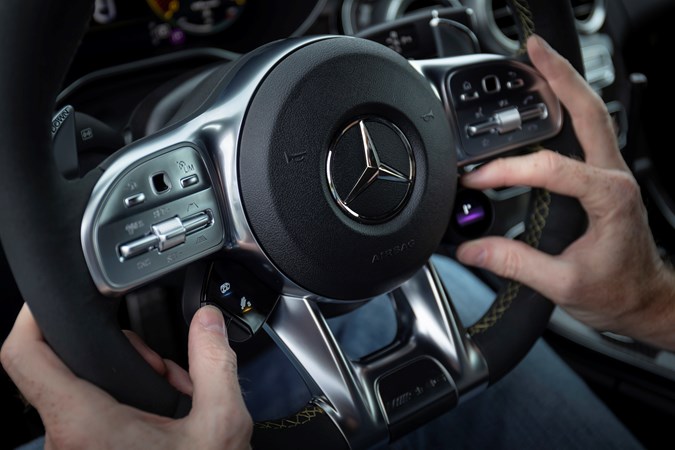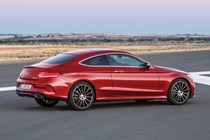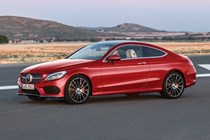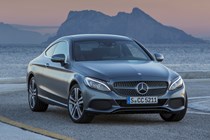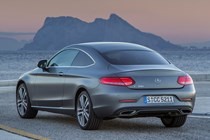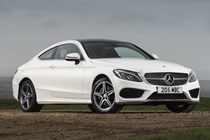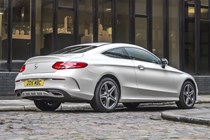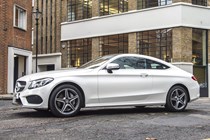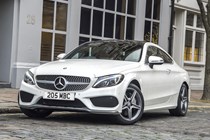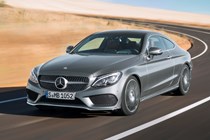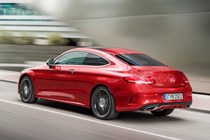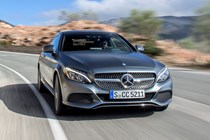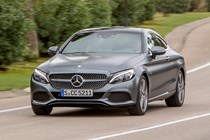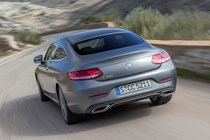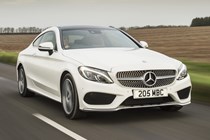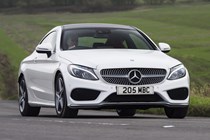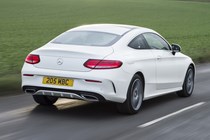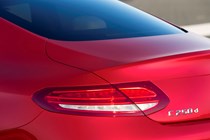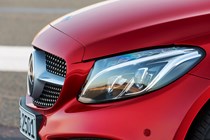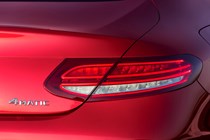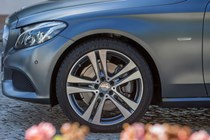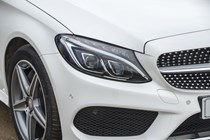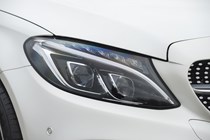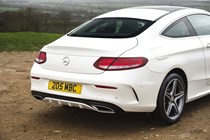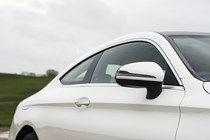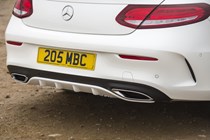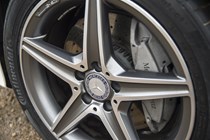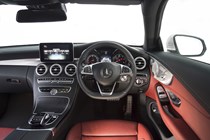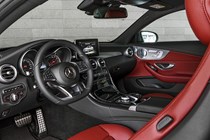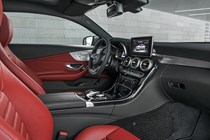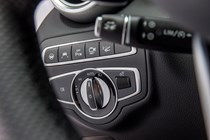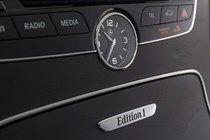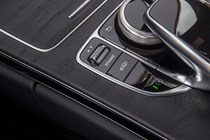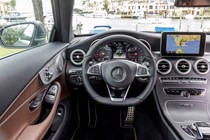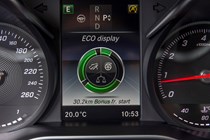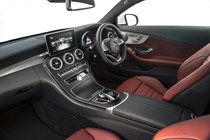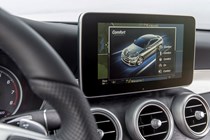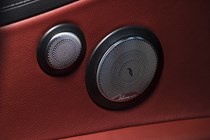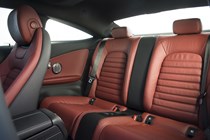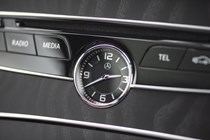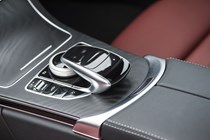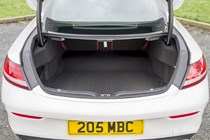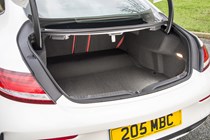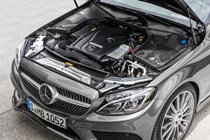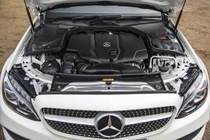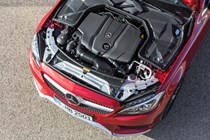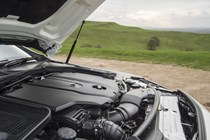
Mercedes-Benz C-Class Coupe (2015-2023) engines, drive and performance
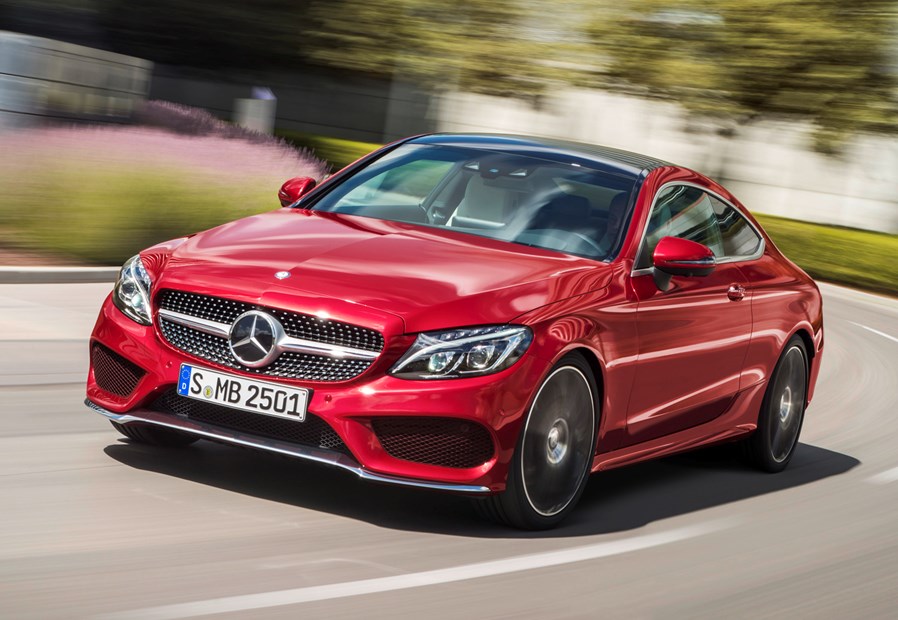
- Two petrols, one diesel, AMG C 43 and C 63 performance models
- Plug-in hybrid version due to follow in 2019
- C 43 isn’t as exciting as it should be, but C 63 certainly is
Arriving with the 2018 facelift was the entry-level C-Class Coupe’s new 1.5-litre four-cylinder petrol engine. It’s available with a power output of 184hp, and is a mild-hybrid, with ‘coasting’ function.
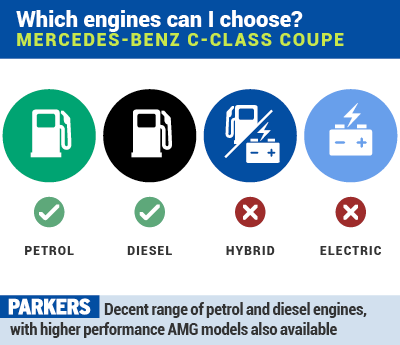
The C 200 is capable of speeds of up to 149mph and a 0-62mph time of 7.9 seconds. Despite this, it returns a claimed 46.3mpg according to official figures. Emissions are quoted at 140g/km of CO2 when riding on the standard 18-inch wheels.
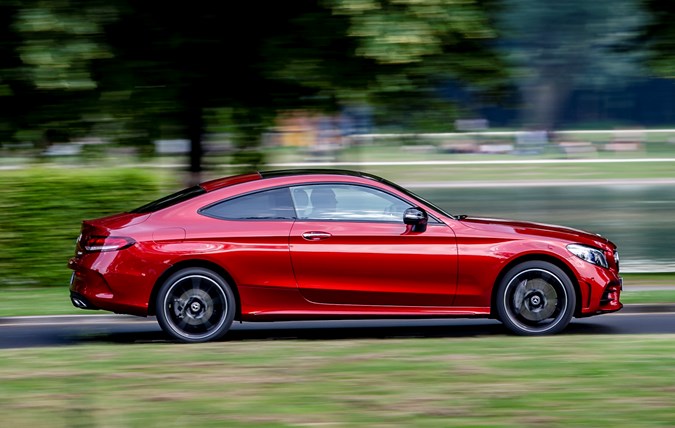
Those seeking more power should consider the C300 with 255hp. This is up from the previous model’s 247. It’s available only with a new nine-speed automatic transmission and completes the 0-62mph sprint in just 6.0 seconds.
Just one C-Class Coupe diesel engine for 2018
Reflecting the changing market, there’s only one diesel version of the 2018 Mercedes-Benz C-Class Coupe. The C 220 d is now powered by a new 2.0-litre motor, developing 194hp. Claimed fuel consumption is 61.4mpg according to official figures, and CO2 emissions are 121g/km on standard 18-inch wheels.
Performance: Mercedes-AMG C 43 Coupe
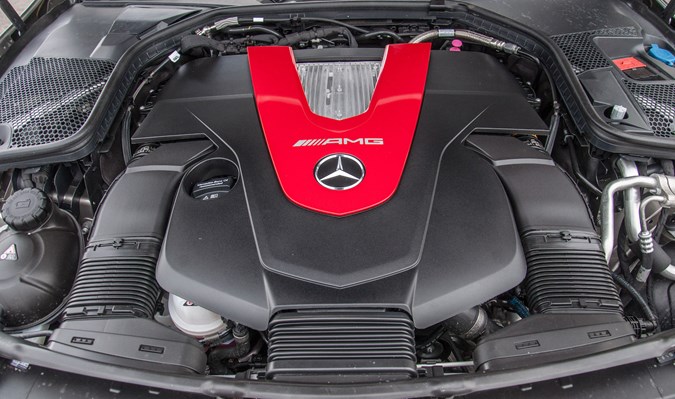
Sitting above the C 300 is the Mercedes-AMG C 43 4Matic, powered by a 3.0-litre twin-turbo V6 petrol capable of propelling the C-Class from 0-62mph in just 4.7 seconds thanks to 390hp and a hefty 520Nm of torque.
It’s not a full-fat AMG, just looking like a regular AMG Line model but with stealthy performance and an engaging engine and exhaust note that isn’t too loud (if you’re not in Sport+ mode), so it’s the kind of performance saloon you can enjoy and make use of every day. In reality it feels more Mercedes and less AMG than we’d been expecting.
The C 63 AMG will be joining the range later in 2018, no doubt addressing that slight disappointment.
Performance: Mercedes-AMG C 63 Coupe
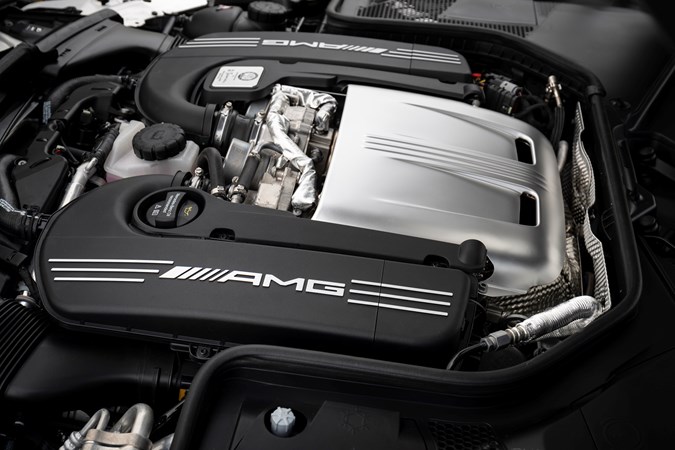
Those after the best performance possible from the C-Class Coupe range will want to plump for the C 63 Coupe. That’s because not only is it the best-handling model in the range, but it uses the 4.0-litre V8 twin-turbo engine found in all C 63 cars, and everything up to the ballisitc Mercedes-AMG GT R supercar.
In 2018 the C 63’s seven-speed automatic gearbox was replaced with a nine-speed item that changes gear quicker and smoother, but is mainly there to improve efficiency.
As before, it can be controlled using paddleshifters behind the steering wheel, and works well left to its own devices in automatic, or controlled by the driver in Manual mode, which keeps the car in your selected gear until you decide to change up or down.
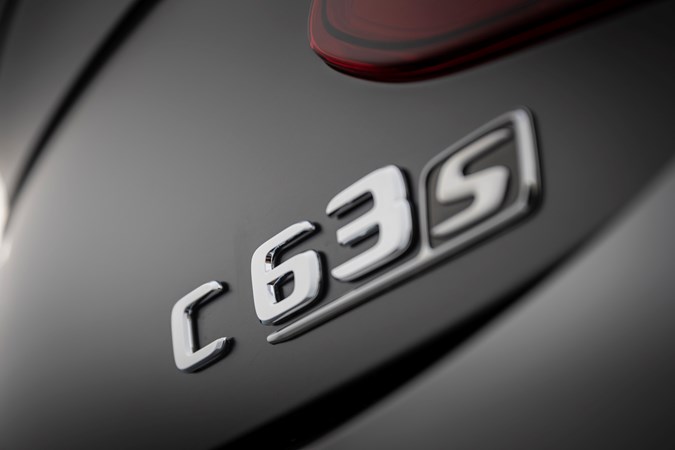
The C 63 is available in both standard (476hp/650Nm) and S (510hp/700Nm) formats, with 0-62mph times of 4.0 seconds or 3.9 seconds respectively.
Discontinued engines in the C-Class Coupe range
The old C 220 d and C 250 d were powered by the same 2.1-litre twin-turbo unit, but were offered in different states of tune. With 170hp available, the C 220 d produced a welcome 400Nm from 1,400rpm, although its clattery engine note was disappointingly conspicuous.
Performance was good though, and whether you chose the six-speed manual or optional nine-speed automatic, it offered a maximum speed of 145mph, although the auto reigned supreme in acceleration terms: its 7.5-second 0-62mph time is three-tenths of a second brisker than the manual’s.
Whichever gearbox you chose, both C 220 d Coupes topped the range’s efficiency chart: they had a claimed average of 68.9mpg, with emissions rated at 106g/km when fitted with 17-inch wheels.
There was 204hp available for the C 250 d, which also saw maximum torque – available from 1,600rpm – rise to 500Nm. The nine-speed automatic was the only gearbox available but it’s a smooth, responsive and unobtrusive transmission. Top speed was 153mph, while 62mph was reached from a standing start in 6.7 seconds.
- Responsive in corners, not as engaging as a 3 Series
- Steering is accurate but not communicative
- Safe and stable, but not as rounded as an A5
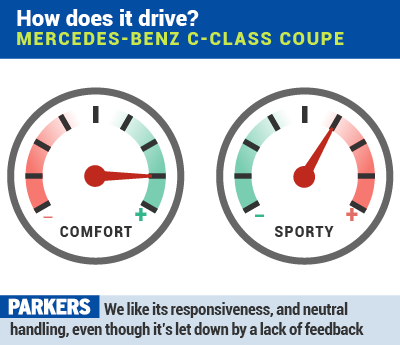
The Mercedes-Benz C-Class Coupe has accurate and responsive handling, and in absolute terms, it’s as good as the benchmark BMW 4 Series Coupe – slightly better riding, a little less precise. Where it does fall down, and this is a minor aspect, is the absolute levels of feedback you get through the steering wheel; there’s less road feel than you get in a 4 Series, or an A5 for that matter.
Those who favour comfort will really like the C-Class Coupe. Standard models are as stiff as you need, but this can be dialled out by specifying the optional, and excellent, adaptive Airmatic air-sprung suspension. This system allows you to switch between Comfort, Sport and Sport+ depending upon your preferences, using the Dynamic Select control on the armrest.
The same driving mode control also allows you to vary the degree of throttle response and how high the engine will rev before the automatic gearbox changes ratios. It also alters the effect of the traction control settings, allowing the Mercedes-Benz to be a little more playful. This comes into its own on the AMG models, where fine adjustability reaps great rewards.
Mercedes-Benz C-Class Coupe: well-weighted steering
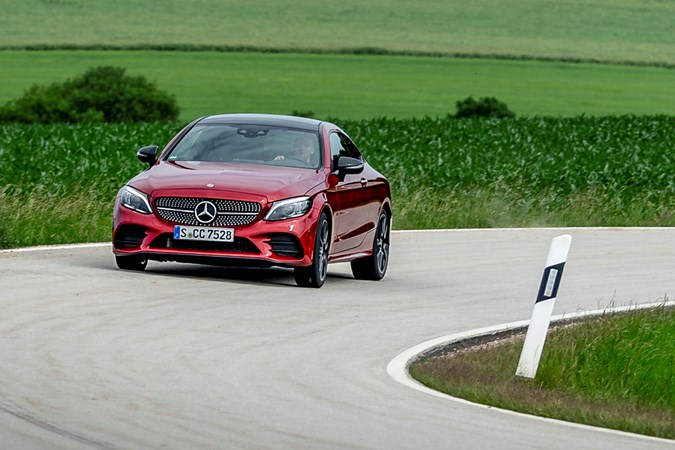
Unsurprisingly, the Mercedes C-Class Coupe’s steering is similar in feel to that of other models in the series, which is to say that its precise and well-weighted, especially in Sport and Sport+ modes. Just don’t get in expecting to feel connected with the road surface particularly.
Mercedes has worked hard to ensure its weighting strikes a well-judged balance, allowing it to be effortlessly light at lower speeds – perfect for urban journeys – yet satisfyingly heavier the faster you go.
Where the C-Class Coupe’s primary rival, the BMW 4 Series, has the edge is the degree of feel through the steering. Not that the Mercedes is poor in this regard, simply that it feels comparatively anaesthetised.
Handling: Mercedes-AMG C 43 4Matic Coupe
The AMG C 43 is a much sportier-handling car than the standard C-Class Coupe, and for enthusiastic drivers, there are more rewards to be had. If you’re expecting a handful of an experience as in the C 63 models, you’re going to be disappointed. The four-wheel drive system keeps things in check, and it all feels very composed.
Its steering is still as inert as the standard C-Class, but it’s sharper and is perfectly-weighted for which ever driving mode you have it in. The best handling compromise comes in Sport mode, as it allows the driver to enjoy the sharper steering and firmed-up damping without the excessively lairy exhaust note Sport+ delivers.
In reality, the C 43 feels more like a composed and capable car with a loud exhaust making is sound more sporting than it actually is.
Handling: Mercedes-AMG C 63 Coupe
The C 63 Coupe is the best-handling model in the range of four bodystyles. This is because the rear track (the distance between the rear wheels) is wider, which means there’s more grip on offer.
The main additions for the post-facelift 2018 C 63 is the addition of torque-vectoring technology, which uses the (now standard on all 63s) electrically controlled rear differential to tighten lines in corners, and a clever motorsport-spec traction control system with nine stages of slip for the rear end.
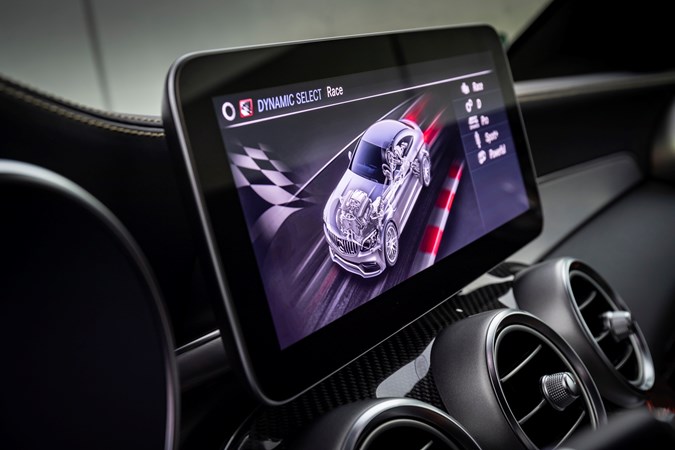
The AMG Dynamics torque vecotring system has four stages: Basic, Advanced, Pro and Master. The bottom rung is for ultra-stable driving in slippery conditions or when using the most comfortable drive mode settings. Advanced comes online when you activate Sport, and makes for a more engaging drive. Pro is available in Sport+ mode, and the torque-vectoring is ramped up so the C 63 corners far tighter.
Finally, Master is only available in the C 63 S Coupe’s Race mode – you don’t get this with the non-S model. This causes the Coupe’s rear end to swing around as you turn into a corner, initiating slides that are then kept in check by the advanced traction control setup, controlled via the rotary control on the right-hand side of the steering wheel – as seen below:
